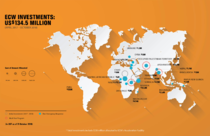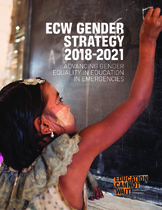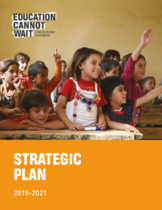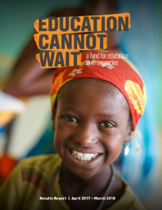This site is inactive as of February 2020. For updated information on an initiative's work, please refer to their own website as listed in their contact details.
Summary
When conflict or crisis erupts, the educational needs of children and youth are often the last consideration – an afterthought following food, water, shelter and protection. Today, 75 million school-aged children and youth are in desperate need of educational support. Time and time again, communities have highlighted the importance of education during times of crises, yet education appeals receive less than 2% of humanitarian funding.
Education Cannot Wait is a new global fund to transform the delivery of education in emergencies. It will play a groundbreaking role in ushering in a more collaborative approach to ensure every crisis-affected child and young person is in school and learning. By bringing together public and private partners, Education Cannot Wait will leverage additional finance and catalyse new approaches to funding and innovation to deliver education in emergencies and protracted crises. The fund aims to reach all crisis-affected children and youth with safe, free and quality education by 2030.
Find the full 2018 Education Cannot Wait Annual Report here.
Partners
The Education Cannot Wait fund joins up governments, humanitarian actors and development efforts to deliver a more collaborative and rapid response to the educational needs of children and youth affected by crises. See a list of all the organizations who made the fund possible: https://www.educationcannotwait.org

Goals
The fund aims to reach all crisis-affected children and youth with safe, free and quality education by 2030. The fund will achieve this through 5 core functions:
-
Inspire political commitment so that education is viewed by both governments and funders as a top priority during crises.
-
Plan and respond collaboratively, with a particular emphasis on enabling humanitarian and development actors to work together on shared objectives.
-
Generate and disburse additional funding to close the $8.5 billion funding gap needed to reach 75 million children and youth.
-
Strengthen capacity to respond to crises, nationally and globally, including the ability to coordinate emergency support.
- Improve accountability by developing and sharing knowledge, including collection of more robust data in order to make better-informed investment decisions, and knowledge of what works and does not.
Resources











 summary
summary partners
partners goals
goals Stakeholder reports
Stakeholder reports resources
resources contacts
contacts

